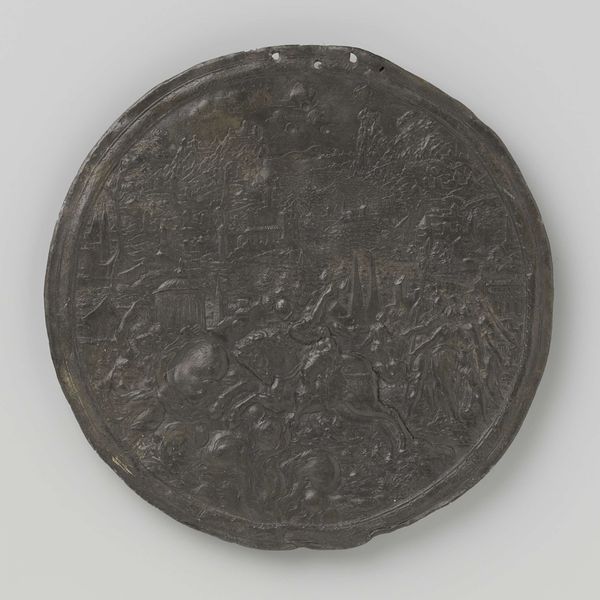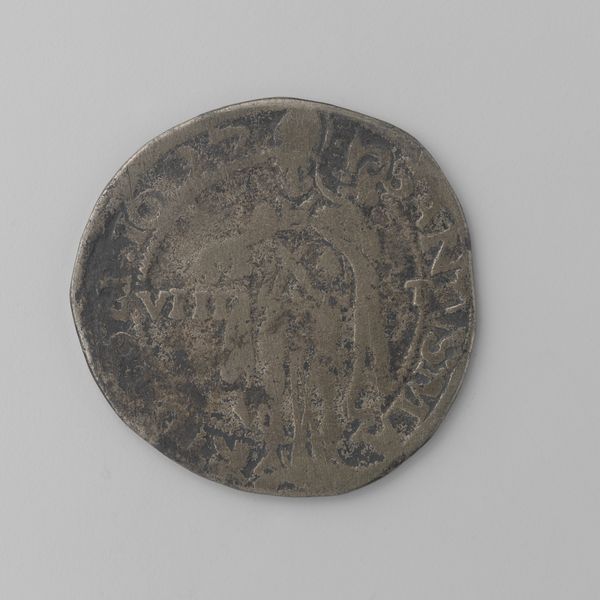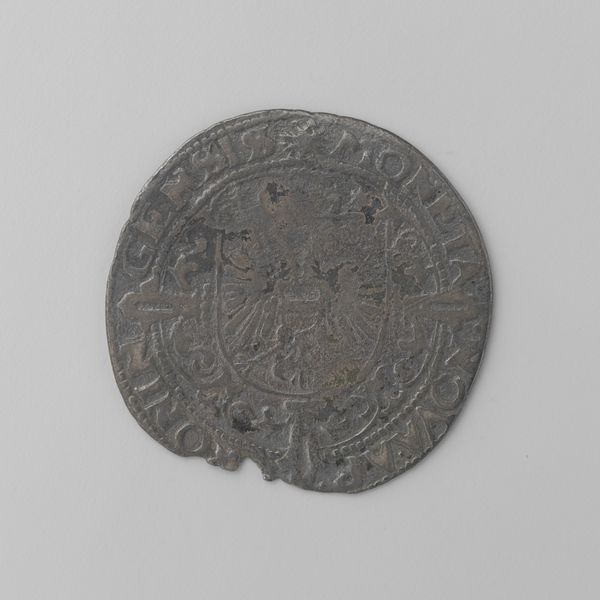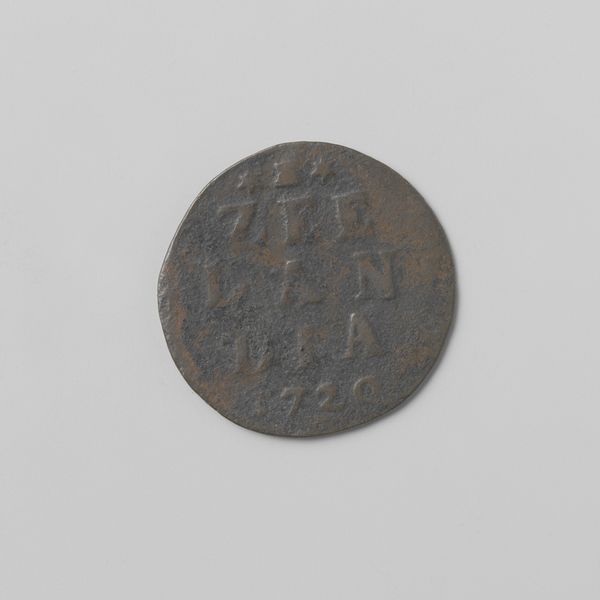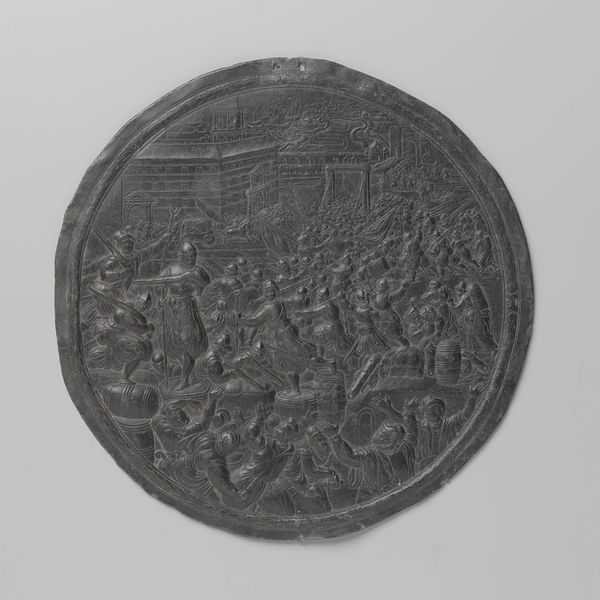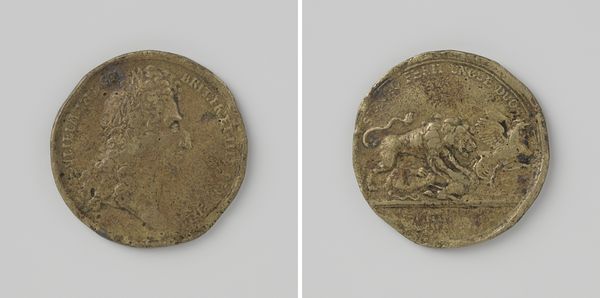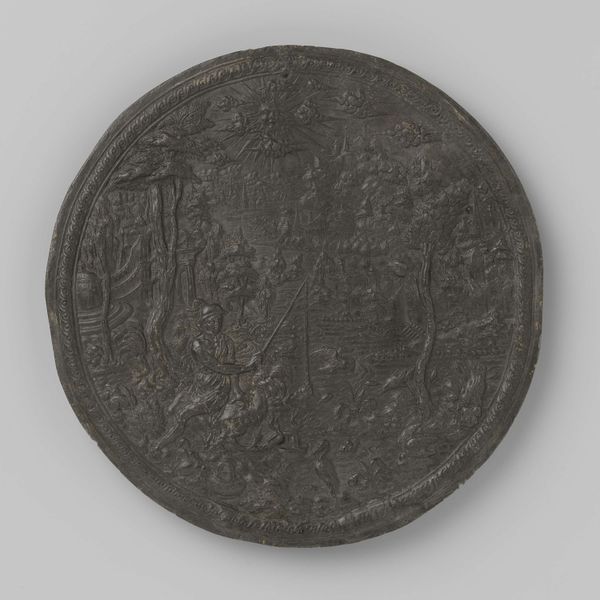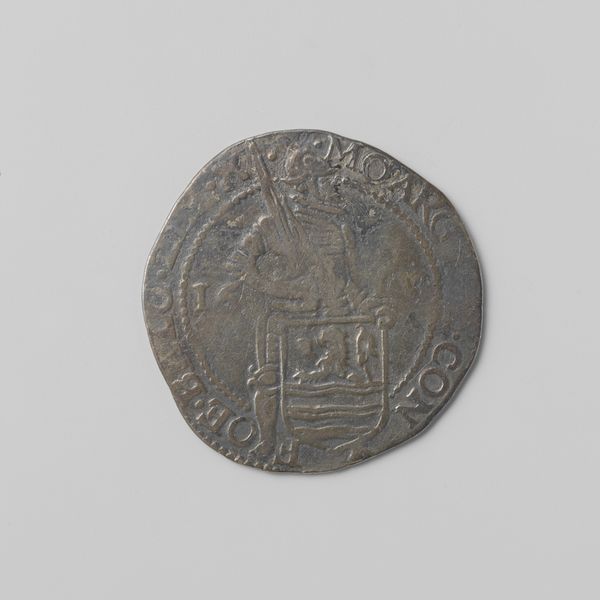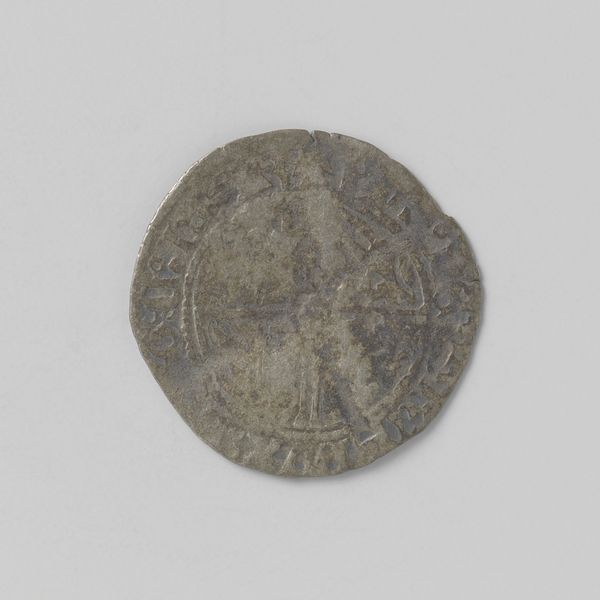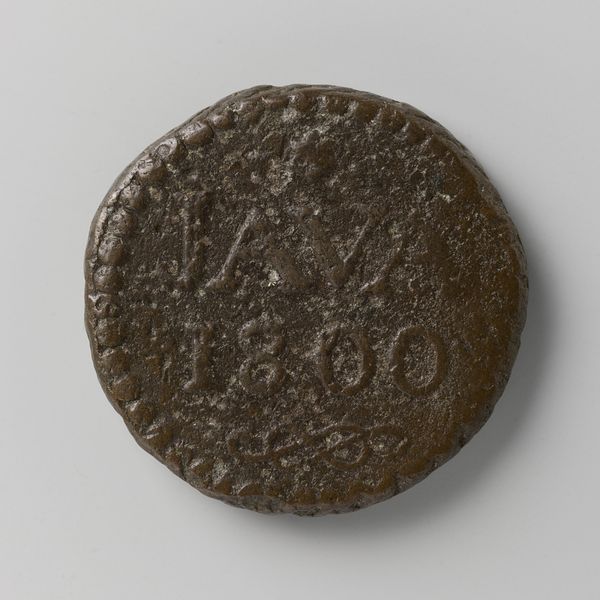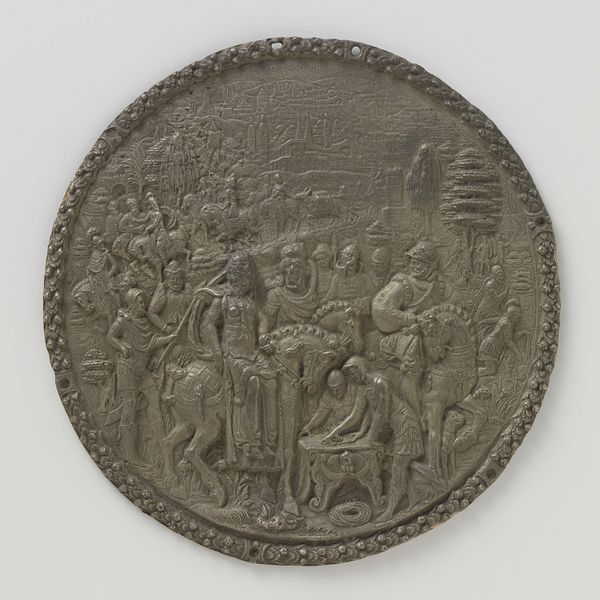
metal, relief, sculpture
#
narrative-art
#
metal
#
sculpture
#
relief
#
landscape
#
mannerism
#
figuration
#
geometric
#
sculpture
#
history-painting
Copyright: Rijks Museum: Open Domain
Editor: Here we have Hans Jamnitzer’s metal relief, “Scylla en Minos,” made in 1569. The scene is chaotic, full of figures, with a rather disturbing tone overall. What interpretations can you offer for this artwork? Curator: It's important to contextualize this piece within the prevailing patriarchal structures of 16th-century Europe and reflect on how historical narratives were weaponized. Looking at the title, 'Scylla en Minos,' what power dynamics do you see emerging between these figures, and how does the artist reinforce or subvert those structures? Editor: I see Minos as a powerful King. And isn't Scylla the monster? How does this relate to patriarchy? Curator: Exactly. This historical narrative might initially seem to be a classic hero story. However, digging a bit deeper, it underscores the dangers of unchecked authority and male aggression. Consider how Scylla, in betraying her father, becomes demonized. Doesn't that reflect a fear of female agency and a need to control women’s roles? And what societal anxieties were present that time which manifested into artworks? Editor: That makes a lot of sense. So, this work might be reflecting the suppression of female power using the form of mythology? Curator: Precisely. By unpacking these gendered power dynamics embedded within the narrative, we can really gain a deeper understanding. Think about it; What narratives are *we* upholding and perpetuating today through the images we consume? Editor: I see how analyzing even classical subjects through contemporary lenses can reveal hidden power structures. This piece encourages us to be aware of how these stories have been twisted. Curator: Indeed. Recognizing art as part of an ongoing dialogue across history, power, and representation allows us a better understanding of both past injustices and present inequalities.
Comments
No comments
Be the first to comment and join the conversation on the ultimate creative platform.
